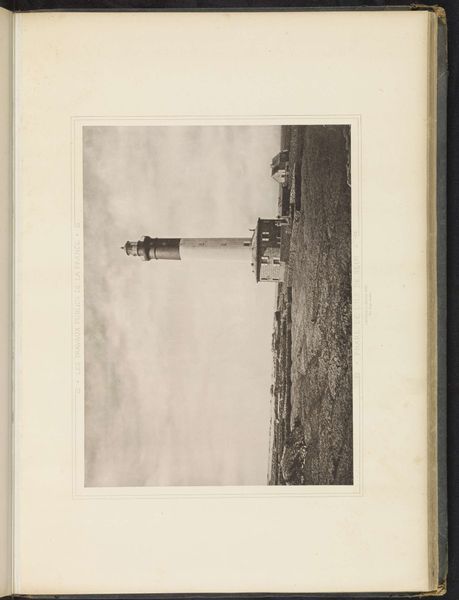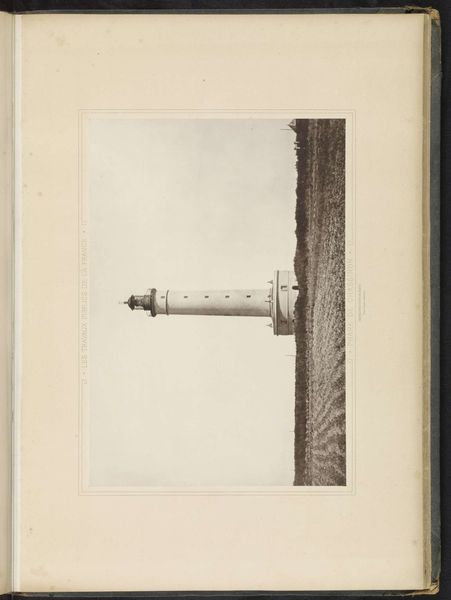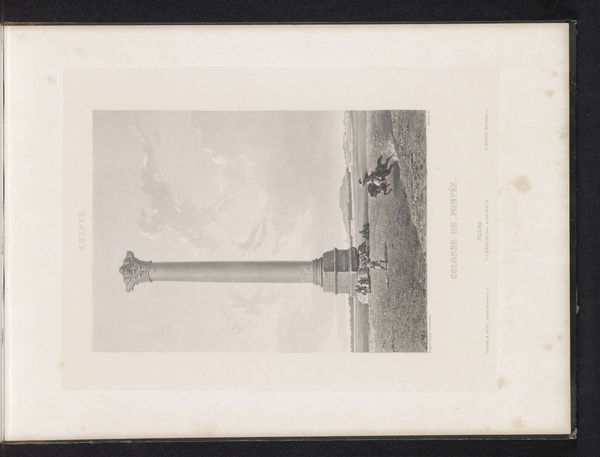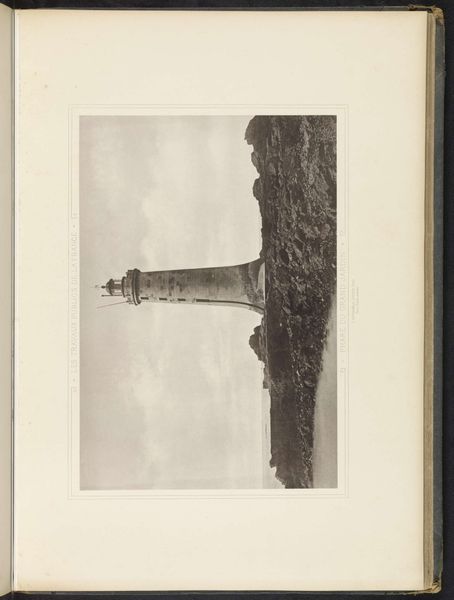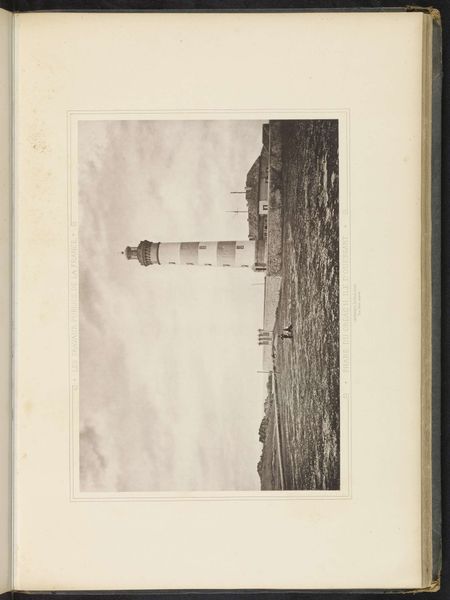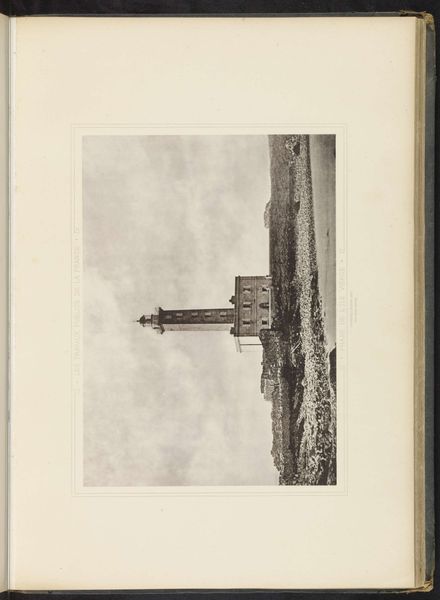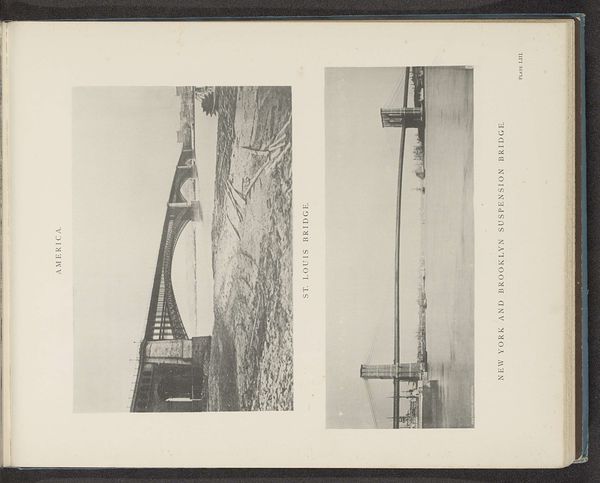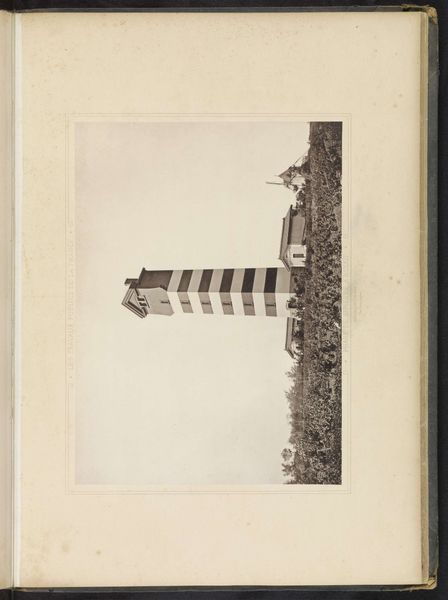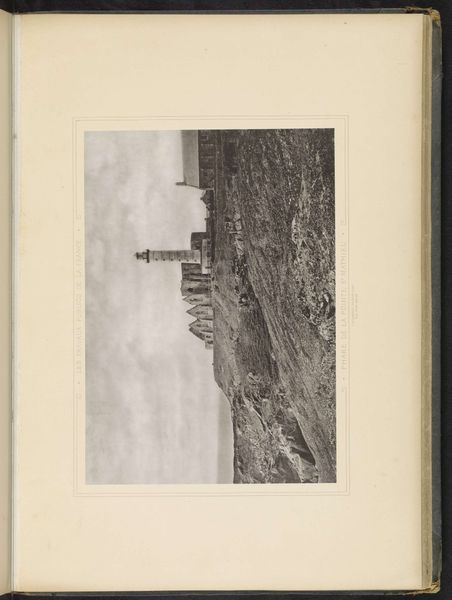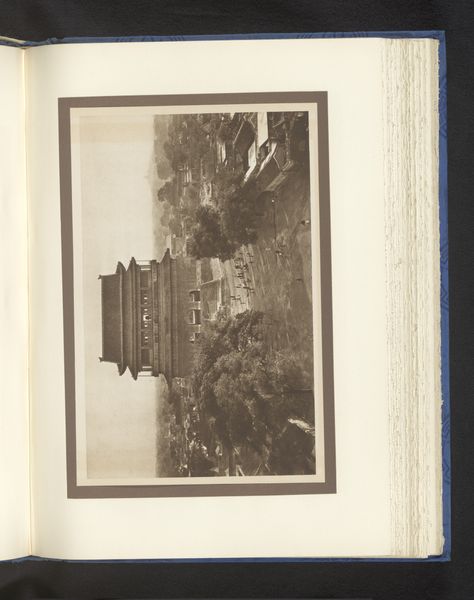
print, photography
# print
#
landscape
#
photography
#
cityscape
Dimensions: height 233 mm, width 313 mm
Copyright: Rijks Museum: Open Domain
Editor: Here we have a photographic print titled "Vuurtoren in de haven van Brest," dating from before 1883. The subject, a lighthouse, strikes me with its towering presence against what seems to be a cloudy, muted sky. What draws your eye, and how do you approach such a historical image? Curator: Well, as a materialist, I'm immediately drawn to the physical existence of this object: the photographic process itself. This isn't just a depiction of a lighthouse; it’s a product of specific technologies and labor. What kind of photographic print is it, and what does that reveal about its production? How was it circulated? Who had access to this image? Editor: That's fascinating! I hadn't thought about the photo as an object with its own history. So, instead of just focusing on the lighthouse as a subject, we should consider the materials used to create the photograph and its role in society at the time? Curator: Precisely. Look at the potential social context. Brest was a major port; this image likely served various purposes – documentation, artistic expression, or even propaganda relating to maritime power. Consider also the labor involved: the photographer, the printers, and those who distributed it. Editor: It’s interesting to consider all the different types of work that went into producing this image. How does focusing on the material and process change our understanding of the cityscape genre? Curator: It challenges traditional notions of artistic value. Is this a "fine art" print, or a commercial product? It invites us to explore the relationships between technology, labor, and representation. This image is a lens through which we can examine the economic and social realities of the late 19th century. Editor: I see. It's more than just a picture; it's a historical artifact revealing so much about production and context. Thank you; I never would have thought about it this way. Curator: Exactly. By analyzing its material existence and the labor involved, we gain a far richer appreciation.
Comments
No comments
Be the first to comment and join the conversation on the ultimate creative platform.
